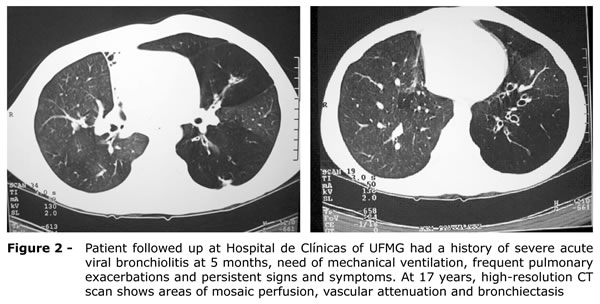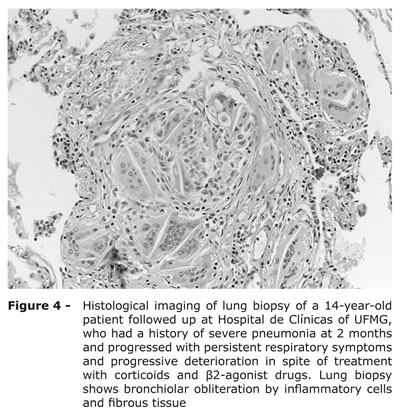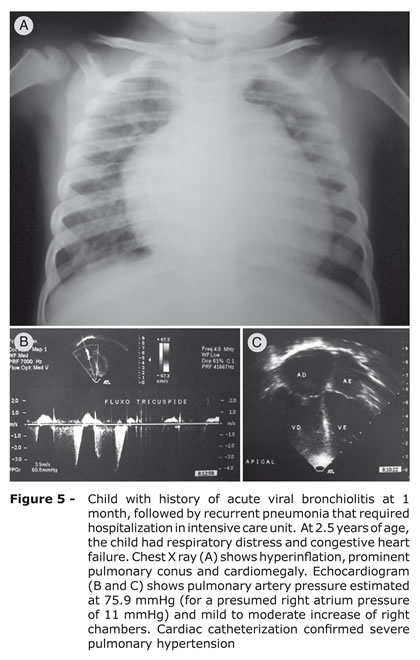OBJECTIVES: To review publications about the main features of post-infectious bronchiolitis obliterans and its history, etiology, epidemiology, risk factors, pathogenesis, histological findings, clinical presentation, complementary tests, diagnostic criteria, differential diagnosis, treatment and prognosis. SOURCES: Non-systematic review of MEDLINE and LILACS databases and selection of 66 most relevant studies. SUMMARY OF THE FINDINGS: In the post-infectious bronchiolitis obliterans there is an insult to respiratory epithelial cells, and its clinical severity is associated with the degree of lesion and inflammation. Diagnosis is made according to clinical signs and symptoms, by exclusion of main differential diagnoses and with the aid of complementary tests. High resolution CT, particularly images obtained during inspiration and expiration, provide information for the evaluation of the small airways. Pulmonary function tests show fixed airway obstructions and marked decrease of FEF25-75%. Treatment has not been definitely established, and corticoids have been administered as pulse therapy or by inhalation of high doses of steroids. However, data about its efficacy are scarce in the literature. Long-term prognosis is variable, and there might be either clinical improvement or deterioration into respiratory insufficiency and death. CONCLUSION: Post-infectious bronchiolitis obliterans is a disease with a high morbidity rate; it should be treated by a multidisciplinary team, and patients should be followed up for a long period of time.
Bronchiolitis obliterans; diagnosis; spirometry; CT; child







